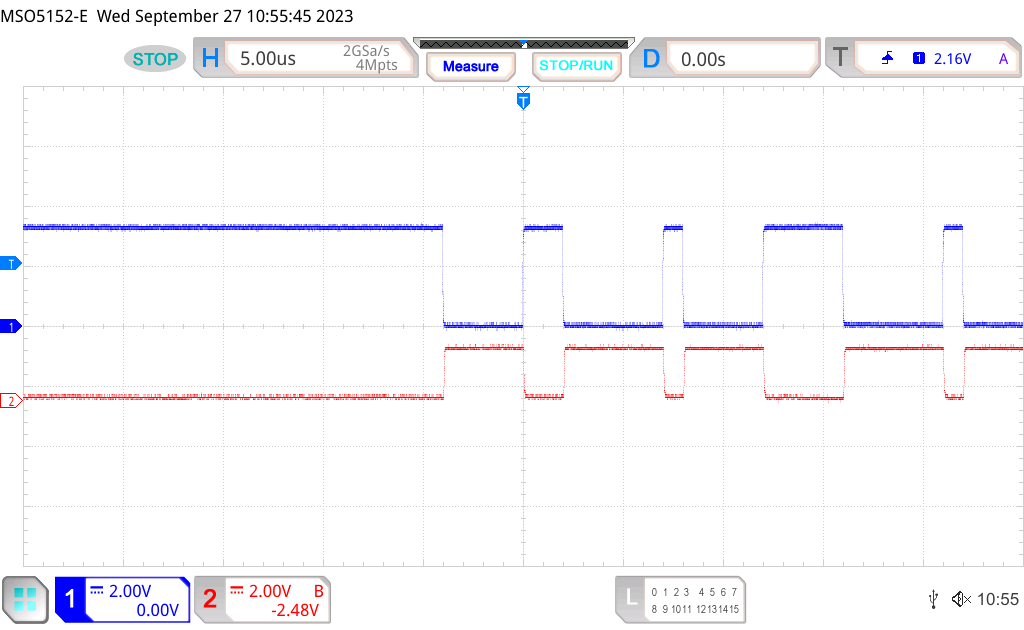TIDUF55 November 2023
3.4.4 Isolated CAN Transceiver Operation
Figure 3-17 shows the signals during CAN transmitter operation. Channel 1 is the input to the transceiver on the TXD signal, changing state with a bit width of about 1 microsecond (1Mbps). Channel 2 is the CAN bus signal CANH-L which responds to the TXD signal.
At this scale, there is no observable time delay between transitions on the TXD pin and transitions on the CANH-L pin. The controlled slope of the CAN bus signals is also apparent.
 Figure 3-12 CAN Transceiver Operation
Signals
Figure 3-12 CAN Transceiver Operation
Signals